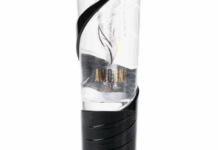From Burnout to Breakthrough, Perdekamp Emotional Method acting training stories and how PEM helps actors and non-actors feel deeply again, safely and repeatably.
When Your Feelings Go Offline
In busy cities, it’s normal to be “on” all the time. We can hit our “marks” at work, at the gym, at the next party—but go oddly blank when real emotion is needed. That’s where Perdekamp Emotional Method acting training comes in.
PEM started in the 1990s as a way to protect actors from emotional harm while still giving raw, truthful performances. Today, its students range from film stars and musical-theater kids to an 88-year-old who, as founder Stephan Perdekamp recalls:
“was 88 and a half years old and wanted to learn about emotions at that age.”
Their stories feel surprisingly close to home.
Whether you’re on set, pitching your project, or just trying to reconnect with your own emotional flavor, PEM is really about one thing: learning to feel again—safely.
What Is Perdekamp Emotional Method Acting Training, Really?
PEM began when Perdekamp, then a young theater director, wanted intense emotion without destroying his actors. He puts it simply:
“I started out as a theater director and wanted to have actors access intense emotions, but in a safe way…”
stephan Perdekamp
“…I didn’t want to be responsible for colleagues getting hurt or having long-term psychological problems.”
Instead of asking actors to relive trauma, he went after the mechanics. What is fear physically?
What does grief do to the body?
Over decades, PEM developed into a body-based system that accesses emotions through specific “access points” in the nervous system rather than through painful memories. (Kalliso | PEM™ Acting+1)
Actors train these patterns the way athletes train sprints. That’s why one university tutor later described PEM performers as “athletes of emotion,” able to repeat emotional states safely and reliably, show after show.openaccess.wgtn.ac.nz
For actors in high-pressure markets like LA, New York, London, and Vegas, that mix about their own nervous systems is a lifeline. PEM doesn’t romanticize suffering. It treats emotion like a skill set—trainable, repeatable, and surprisingly precise.
From Burnout to Balance: Stories from PEM Classrooms
“You can be emotionally intense and safe at the same time.”
PEM Master Instructor Sarah Victoria started as an actor searching for something that didn’t break her.
She’d tried other methods. One role, playing a murderer, left her shaken:
“I played a character […] and I felt the switch in my head, where I could not identify reality anymore.
becoming intense. And I went beyond that and it
really shell-shocked me.”
Sarah Victoria
PEM Master Instructor
When she auditioned for Perdekamp’s school, everything shifted:
“I suddenly realized i can access emotions and I don’t have to traumatize myself.”
Later she discovered the line that defines PEM: “That’s what I want to get across…”
“…everyone knows you can be emotionally intense and safe at the same time.”
In a world where science now clearly links emotion, the nervous system, and physical stress responses, that matters.
PEM students learn specific exercises for fear, aggression, grief, lust, happiness, and revulsion. Emotions are treated like movement “programs” that can be switched on and off. It sounds like a magic trick, but as Perdekamp insists,
“The effect looks magical, but it’s actually very technical and very calm, very organized.”
Perdekamp
There’s even certain quirks to the work: actors running “fear sprints” across a baseball field or across a park where passersbys instinctively started running too because the fear looked so real.
When Method Acting Becomes Torture
One story Sarah shares hits especially hard for anyone who’s ever flirted with burnout:
An actor was booked to shoot a crying scene on Friday. She stayed in that emotional state all day on set. Then the call came: production ran out of time and the scene moved to Monday.
“And so the whole weekend, she was a mess, because she tried to stay in that crying state”
And on Monday, she managed, but it was so costly for her psychologically, emotionally, that she was drained afterwards. And that’s, the point when she Googled [PEM].”
The old myth says you have to suffer for art. Perdekamp pushes back:
“It’s quite remarkable how everybody sort of shrugs that off…
that actors need to sacrifice their mental and physical health for creating something remarkable.”
With Perdekamp Emotional Method acting training, the body does the emotional heavy lifting, while the mind stays anchored in reality. When the scene is over, you step out of it. Fully.
Beyond Actors: PEM for Everyday Stress and Emotional Burnout
PEM didn’t stay in the studio.
Families saw their actor kids come home calmer, more grounded. They wanted in. Today, PEM runs programs for non-actors in Germany and Australia, and increasingly online.(Kalliso | PEM™ Acting+1 )
Perdekamp explains stress and burnout in a way that fits the grind of politics or finance:
“Psychology knows now that stress is basically a jammed system of fight and flight responses.”
You’re stuck between wanting to push through (aggression) and wanting to run away (fear). The body burns energy on both. Over time, it depletes you—until, as he puts it:
“Your automatic, you know, subconscious system decides that we’re not going to throw more energy on this problem. That’s what we call burnout.”
PEM gives people simple physical tools to unjam those patterns: exercises that strengthen clean aggression, clean fear, and then release them. Sarah says:
“The amount of stress I could get rid of and release from my body in the past 20 years, you know, is just it’s, I don’t know the word for that.”
Sarah Victoria describes going home after a brutal cutting scene onstage, hearing the audience sob… and yet being able to reset in minutes for the next, lighter scene:
“There is no emotional residue.”
That kind of emotional acknowledgment about our own patterns isn’t just useful in acting. It’s useful when you’re juggling clients, your family , or a late-night work shift. It adds real emotional flavor to life. without the crash.
For a broader science backdrop on how emotions live in the nervous system and body, the American Psychological Association offers accessible overviews of how stress and emotion show up physically.American Psychological Association+1
Inside the “Athlete of Emotion” Mindset
In Wellington, an acting tutor once wrote a master’s thesis on PEM titled Athlete of Emotion.openaccess.wgtn.ac.nz The phrase stuck.
PEM actors separate their own feelings from the emotional “scales” they train. Sarah puts it in practical terms:
“You can really separate those… and then you can actually start to mix and combine them.”
She describes layering fear, aggression, and grief like a jazz musician blends notes, dialing intensity up or down second by second:
“So suddenly, the aggression comes in more, but the fear stays underneath…
and then the grief comes in, and it takes over and then it goes back to fear.”
The result? Performances with more texture, more emotional flavor, and a surprisingly creative freedom. You’re not begging your nervous system to cooperate. You know which “dial” to turn.
For directors and producers—from Hollywood to London’s West End—this is gold.
Perdekamp recalls an Austrian director watching a PEM-trained actor adjust her grief on command. His stunned reaction:
“My God, what did you see?”
Her answer was pure PEM. No trauma. Just craft.
If you’re curious to go deeper into the mechanics, you might connect PEM’s body-based approach with broader research on how emotions, movement, and the autonomic nervous system intertwine.PMC+1
And yes, the vibe in class is often intense and oddly fun-loving—more backstage jazz bar in San Francisco than sterile lecture hall.
FAQ: Perdekamp Emotional Method Acting Training
Q: Is PEM just for professional actors?
A: No. PEM began in actor training, but now runs programs for non-actors dealing with stress, anxiety, and emotional burnout. There are workshops and online sessions for students, executives, creatives, and people who simply feel “shut down.”
Q: Does PEM use trauma or painful memories like some method acting styles?
A: No. As Perdekamp explains, traditional psychological methods “use the mind to imagine, to remember situations” and push actors into those states. PEM instead trains physical access points in the nervous system so “the mind is still in the acting class. It’s not in the burning house.”
Q: Is this some kind of chakra or spiritual system?
A: Sarah is clear: “We just work with biology. We’re not doing any kind of chakra work. This is very important to us. We’re just working purely with the mechanics of the body and the nervous system directly.”
Q: Can PEM be learned online?
A: Yes. Because it works with bioelectric signals and movement patterns, PEM translates well to Zoom. As Sarah says, “what’s so great about PEM is you can teach it online because it’s so precise.”
The New Future for Feeling
PEM lives at an interesting crossroads: between cutting-edge neuroscience, old-school craft, and the everyday need to feel human again in fast, glittering cities.
Perdekamp sums it up beautifully:
“It’s a question of balance, of peace, calm
and the ability to start with the adequate energy in every situation, instead of being loaded with stuff from the past.”
stephan Perdekamp
Whether you’re a dancer, a theater kid, or a business professional who forgot how to cry, Perdekamp Emotional Method acting training offers a practical way back to your own emotional life—full flavor, no hangover.
If your nervous system has been working overtime for years, PEM might be the class where you finally learn to feel again.
Perdekamp Emotional Method acting training stories and how PEM helps actors and non-actors feel deeply again, safely and repeatably.


















![Get Your Indie Movie Made (Responsibly): Jeff Caruso of Wrapbook Leads the AFM 2025 Film Finance Conversation [Exclusive Interview] American Film Market](https://dailyovation.com/wp-content/uploads/2025/11/AmericanFilmMarket2025-1-218x150.jpg)














